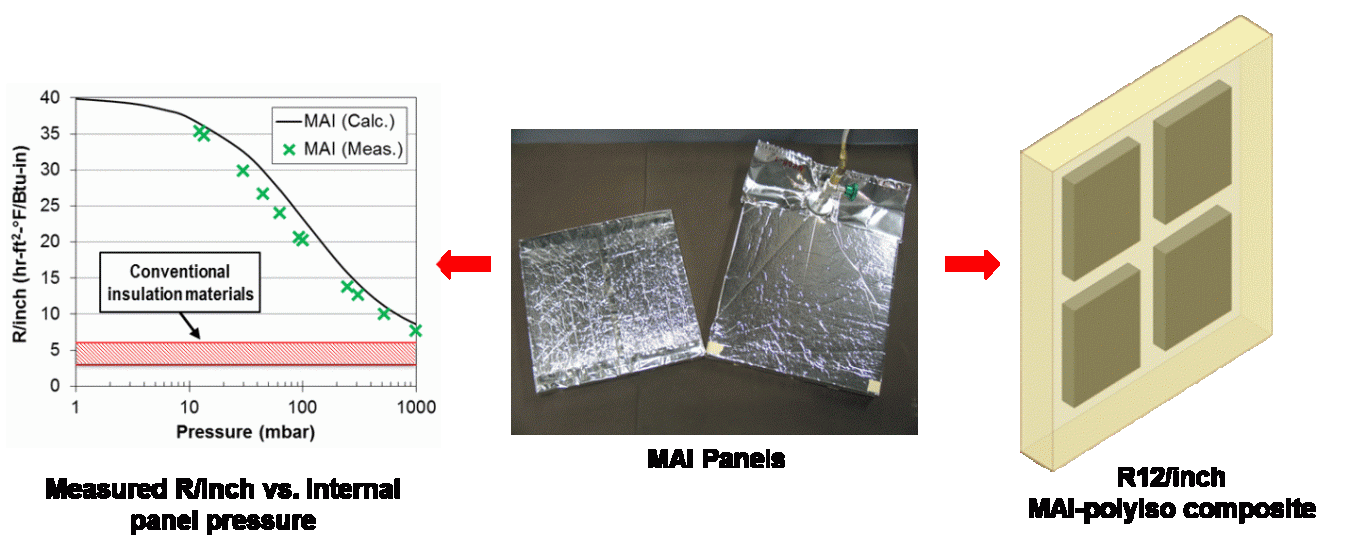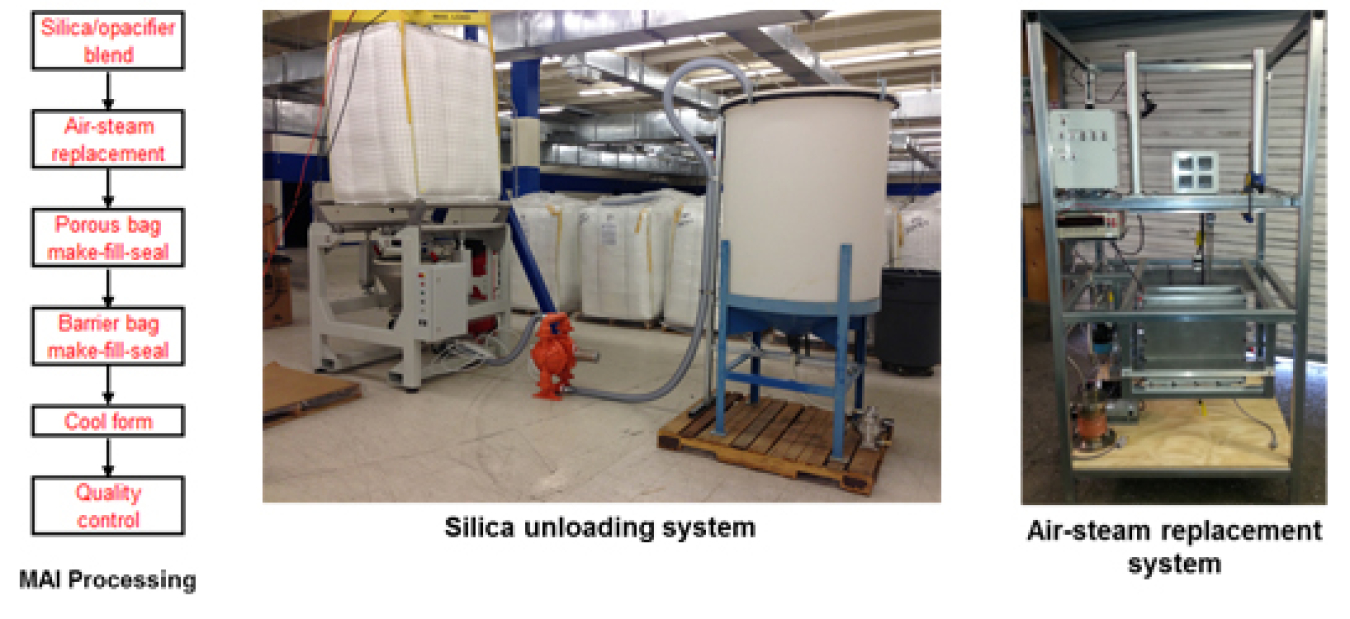

Lead Performer: Oak Ridge National Laboratory (ORNL) - Oak Ridge, TN
Partners:
-- Nanopore Inc. - Albuquerque, NM;
-- Firestone Building Products Company - Indianapolis, IN
DOE Total Funding: $2,763,000
Project Term: October 2013 – September 2019
Funding Type: Lab Award
Previously funded under Building Energy Efficiency Frontiers and Incubator Technologies (BENEFIT) - 2014 (DE-FOA-0001027) under the project title “R25 Polyisocyanurate Composite Insulation Material”
Project Objective
The objective of this project was to develop 2-inch thick polyisocyanurate board insulation with modified atmosphere insulation (MAI) cores that have an R-value of 25 (R12/inch) and a cost premium of no more than $0.30 per square foot for a insulation material of equivalent R-value with a simple payback of 10 years. MAI is a lower-cost alternative to vacuum insulation, with similar performance (R35/inch). The cost target is expected to be refined during the project as the research work and technology-to-market analysis are performed. The project team reached this initial target and new targets are described in a later section.
The project team developed a drop-in replacement for polyisocyanurate foam insulation that increases its R-value by a factor of 2. To accomplish this goal, production of MAI panels was modified to produce the correct geometries, barrier materials were evaluated that can handle the high temperatures developed during the exothermic reactions occurring during foaming process, and a mechanism to fix the panels within the foam core was developed. Barrier films were further evaluated to address the required longer service life of the polyisocyanurate foam board (up to 50 years), and a procedure to predict long-term performance was developed. Foam boards were designed so that MAI coverage is optimized to yield the desired R-value cost-effectively, and foam flowability and processing to guarantee complete encapsulation of MAI panels is addressed. Iterations were made to the manufacturing process and the MAI-polyiso composite design to improve the overall performance (R-value and cost). In parallel with the research and development work, technology-to-market analysis was performed to formulate a commercialization plan.
Once these goals were achieved, the team turned their focus on novel core material development to significantly improve performance and reduce costs. The research team will evaluate and minimize the solid conduction and radiation heat transfer modes, develop a dry processing method for the plastic fiber cores, evaluate barrier films needed for the new vacuum insulation panels (VIPs), and refine the thermal analysis of the barrier composites containing the new VIPs. The new targets for the project are to create VIPs/MAI with a new developmental core and an R-value of 70-80/inch. The team will also perform a field installation and validation of the R25 boards on a low-slope roof in an occupied building, solicit contractor feedback on barriers to adoption and develop mitigation measures. Finally, an accelerated aging protocol will be developed.
Project Impact
The new R12/inch insulation product would be attractive for applications where the thickness of the insulation is important. Two applications that would clearly benefit are wall sheathing and commercial roof retrofits. The target of an R-value of 70-80/inch is at least twice the thermal performance of current VIPs.
Contacts
DOE Technology Manager: Sven Mumme
Lead Performer: Andre Desjarlais and Kaushik Biswas, Oak Ridge National Laboratory
